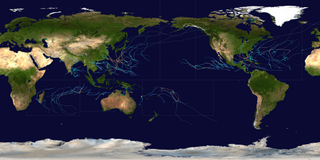The name Haitang has been used to name four tropical cyclones in the northwestern Pacific Ocean. The name was contributed by China and literally means "Chinese flowering crabapple".
- Typhoon Haitang (2005) (T0505, 05W, Feria) – struck Taiwan and China.
- Tropical Storm Haitang (2011) (T1118, 21W) – made landfall in Vietnam.
- Tropical Storm Haitang (2017) (T1710, 12W, Huaning) – struck Taiwan and China.
- Tropical Storm Haitang (2022) (T2221, 24W) – churned in the open ocean and affected no land areas.

